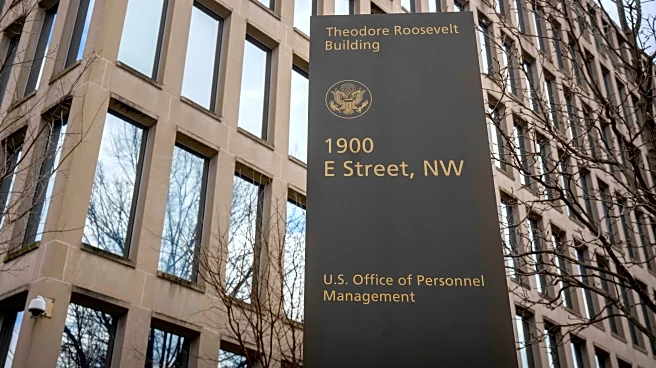What is the story about?
What's Happening?
The Office of Personnel Management (OPM) has finalized a rule that allows federal agencies to implement a forced distribution system for rating the performance of Senior Executive Service (SES) members. This system restricts the number of executives who can receive the highest performance ratings of 'outstanding' and 'exceeds fully successful' to no more than 30% of SES members. The rule aims to address concerns that too many senior executives were previously receiving top ratings, with 96% rated at levels 5 and 4 in the 2023 performance cycle. The Trump administration supports this change, arguing it will encourage higher performance levels among SES members. Noncareer SES members, often political appointees, are exempt from these rating limits to prevent preferential treatment concerns.
Why It's Important?
This rule change is significant as it alters how performance is evaluated within the federal government's senior leadership, potentially impacting career advancement and bonus eligibility. By limiting top ratings, the rule aims to foster a more competitive environment, encouraging executives to improve performance. However, it may also lead to internal competition and affect morale among senior executives. The removal of diversity and inclusion criteria from performance evaluations could also have long-term implications for the representation and inclusivity within the SES, which has been noted to be disproportionately white and male.
What's Next?
Agencies will need to adjust their performance evaluation processes to comply with the new rule, potentially leading to shifts in how senior executives are assessed and rewarded. The impact on executive performance and agency outcomes will be closely monitored by stakeholders, including the Senior Executives Association, which has expressed concerns about the effectiveness of forced distribution. The rule's implementation may also prompt discussions on the balance between performance management and diversity initiatives within the federal workforce.
Beyond the Headlines
The rule's emphasis on aligning SES performance with the president's policy agenda highlights a shift towards more politically driven performance evaluations. This could influence how senior executives prioritize their work and align with broader government objectives. The removal of diversity and inclusion criteria may also signal a shift away from these values in federal leadership, potentially affecting the government's ability to attract and retain diverse talent.
AI Generated Content
Do you find this article useful?














